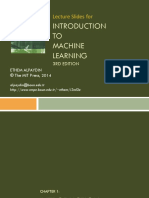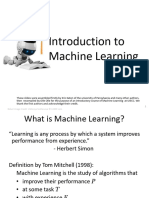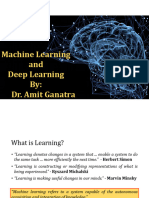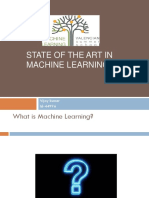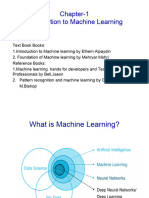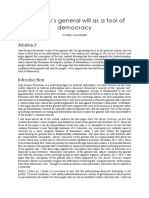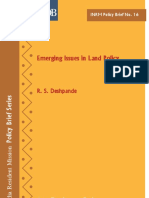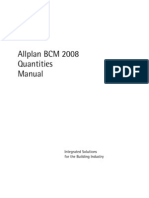0% found this document useful (0 votes)
10 views16 pagesMachine Learning Basics & Applications
The document provides an introduction to machine learning, explaining its purpose of optimizing performance criteria using example data. It covers various types of learning including supervised, unsupervised, and reinforcement learning, along with their applications such as classification and regression. Additionally, it outlines the historical development of machine learning from the 1950s to the present day.
Uploaded by
nimishakulshrestha1112Copyright
© © All Rights Reserved
We take content rights seriously. If you suspect this is your content, claim it here.
Available Formats
Download as PPT, PDF, TXT or read online on Scribd
0% found this document useful (0 votes)
10 views16 pagesMachine Learning Basics & Applications
The document provides an introduction to machine learning, explaining its purpose of optimizing performance criteria using example data. It covers various types of learning including supervised, unsupervised, and reinforcement learning, along with their applications such as classification and regression. Additionally, it outlines the historical development of machine learning from the 1950s to the present day.
Uploaded by
nimishakulshrestha1112Copyright
© © All Rights Reserved
We take content rights seriously. If you suspect this is your content, claim it here.
Available Formats
Download as PPT, PDF, TXT or read online on Scribd
/ 16


